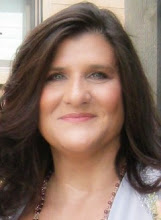Battle scenes make epic computer-generated graphic scenes in movies. They can devour a great deal of screen time. The same theory should not be applied to a book.
1) Information.
2) Weapons.
3) Access.
4) Prisoner.
5) Critical team member.
6) Strategic position.
7) Ally.
8) Enemy.
9) Cohesion as a team.
10) Division as a team.
Don’t insert a battle to increase the page count or because you think the script calls for it. Whether you write a court battle, a paranormal melee, or a gang encounter with police, make certain your battle scene serves a purpose.
When a battle is fought, it should result in change. One side should lose or gain:
1) Information.
2) Weapons.
3) Access.
4) Prisoner.
5) Critical team member.
6) Strategic position.
7) Ally.
8) Enemy.
9) Cohesion as a team.
10) Division as a team.
Writing the details of a battle covers more pages in a book than seconds on film and it is easy to lose the reader with the choreography.
What is more intense for you as a reader: opposing hordes of aliens whacking away at each other, or a close up duel between antagonist and protagonist?
Battle scenes should not be thrown in thoughtlessly, no matter the genre. Despite the belief that battle scenes equal tension, a pointless battle scene or a battle between characters that are of lesser importance is a letdown for your reader.
The further you move the verbal camera from the protagonist, the less the reader cares. He is more inclined to skim past the choreography to get to the point. How did it end? What difference did it make?
What is more intense for you as a reader: opposing hordes of aliens whacking away at each other, or a close up duel between antagonist and protagonist?
Battle scenes should not be thrown in thoughtlessly, no matter the genre. Despite the belief that battle scenes equal tension, a pointless battle scene or a battle between characters that are of lesser importance is a letdown for your reader.
 |
Diana Hurwitz is the author of Story Building Blocks: The Four Layers of Conflict, Story Building Blocks II: Crafting Believable Conflict, Story Building Blocks III: The Revision Layers, and the YA adventure series Mythikas Island. Her weekly blog, Game On: Crafting Believable Conflict explores how characters behave and misbehave. Visit DianaHurwitz.com for more information and free writing tools. You can follow her on Facebook and Twitter. |



Excellent post, Diana. Neither battle scenes nor any other scenes should be added to pad a book's page count. If it doesn't move the story forward, it doesn't belong. If it doesn't engage the reader, it doesn't belong. If the tension created doesn't flow seamlessly into the story, it doesn't belong.
ReplyDeleteI'd fight you on this one, Diana ... but think how much space I'd eat up in my comment. No, seriously, a very good point ... and, for my money, it does apply to cinema, too ... battle scenes in movies can get tedious very quickly ... you know I'm a big James Bond fan, but the end of most Bond flics become as dull a dishwater when hoards of the villain's henchmen clash with the hoards of soldiers ... much less engaging than Bond in a tux at the Chemin de Fer game, eyeing the femme fatale, and cooly lighting a cigarette , don't you think?
ReplyDeleteI agree completely. I feel the same way about hordes of orcs, werewolves and vampires, and insert generic battle scenes in any war movie or movie based on video games. It's a pity the cinema screen isn't equipped with a fast forward button. :)
DeleteThis is an amazing tip! Thanks for the great post!
ReplyDeleteInstructive post, Diana. I know one erotic sci-fi/fantasy author who writes fight scenes that are 15 pages long or more. I've never read them, but I know I'd find them tedious. I rarely have fight scenes, but they're usually quick.
ReplyDeleteI've never written a battle scene, but if I ever do, this post will come in handy. Thanks.
ReplyDeleteBattles are great tension, but too many make them seem the norm, and not tension building.
ReplyDeleteMorgan Mandel